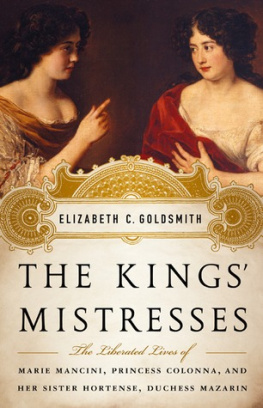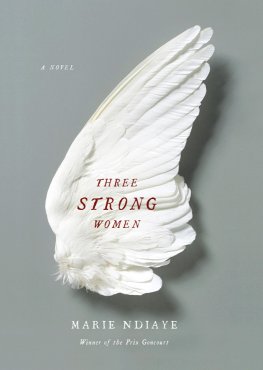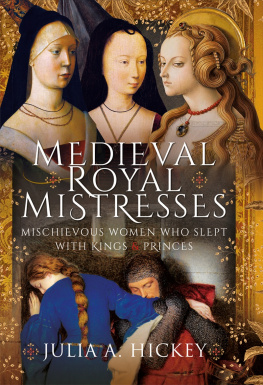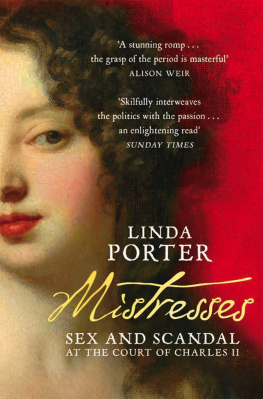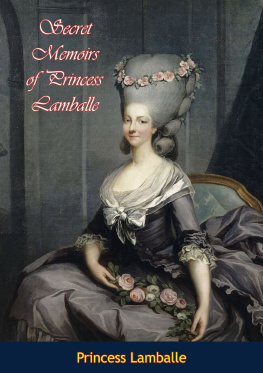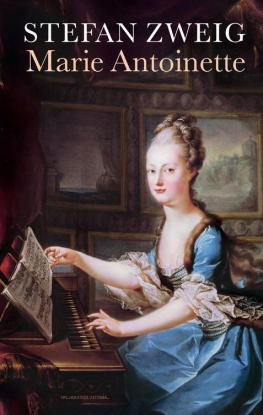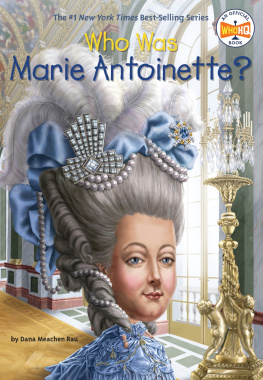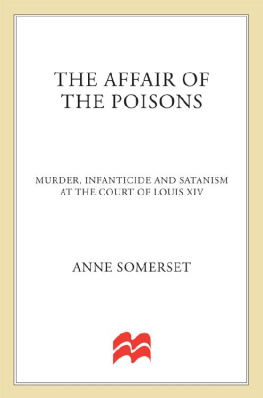
Table of Contents

The Duchess Mazarin dressed as Diana, by Benedetto Gennari Courtesy of Sothebys Picture Library

AUTHORS NOTE
I FIRST ENCOUNTERED Marie and Hortense Mancini through their memoirs, as I was working on a historical study of French women writers. I was interested in how women in the early modern period told the story of their lives and how they thought about themselves as writers at a moment in European history when female writers began to sign their names to printed books. The two sisters were among the first to openly publish their life stories. As I read their narratives, I was amazed by their extraordinary daringnot only in their decision to go public with their private lives, but in the unfolding of the events themselves, which were tales of unbelievable adventure, worthy of a novel. Historians and chroniclers of the age of Louis XIV have tended to refer to Hortense and Marie either as scandalous pleasure-seekers or pathetic victims, usually pleasure-seekers who became pathetic victims. I saw them as bold, energetic, fascinating women who certainly loved pleasure but who also fought for their personal liberty and overcame obstacles so great that in the process they inspired other women of their generation and beyond.
My fascination with them began in 1995 and continued through a series of projects, each one ending with me thinking that I had finally finished my work on Marie and Hortense. But at each end of the road I saw another path beckoning. When Patricia Cholakian and I decided to work together on a new edition of Maries memoirs, I wrote to the Colonna family, Maries descendants, to see if I could access their family papers. I received no response, and then suddenly, a few months later, I heard that the Prince Colonna had decided to donate all of the family papers to a state library housed in a monastery two hours north of Rome. That news drew me into a series of visits to the Santa Scolastica library in Subiaco, Italy, where I kept searching for the original manuscript of Maries memoirs, and I kept finding other papers and letters that seemed even more fascinating than the ones I was looking for. I never found the original manuscript but I read hundreds of letters written by Marie, her family and friends, and her obsessed husband. The adventures of Hortense, too, and the amazing travels of both sisters were woven through the accumulated letters that remained mostly unorganized, piled in boxes, but preserved over the centuries by their descendants.
Two biographers of Marie Mancini Colonna had been given access to the Colonna papers before me, both of them while the papers were held in the private family library in Rome. Clara Adle Luce Herpin, who wrote at the end of the nineteenth century under the male pseudonym Lucien Perey, published a detailed account of Maries romance with Louis XIV, and she pursued the story in an excellent second volume devoted to Maries life after her marriage. But the Colonna family had denied her request to read Maries private correspondence. More recently, Claude Dulong wrote a biography drawing on a broad array of letters and documents that were at the time still housed in the palazzo Colonna. Dulong expresses some exasperation with the character of Marie that she discovered there. At each turn in the complicated route of Maries life, Dulong admonishes her for her recklessness, her unpredictability, her lack of restraint. This was not my response when I read the letters. I came to appreciate, making my way through the delicate web of correspondence with the family as Marie and Hortense both tried to negotiate their independence, how recklessness and unpredictability could be used as strategies, and a viable means of self-protection when one has spies tracking ones every move.
Most biographical studies of Hortense Mancini have focused on her years in London and especially the period when she was mistress to Charles II. Georges Mongrdien (1952) and Toivo David Rosvall (1969) published fuller treatments of her life, but neither of them was able to draw on the Colonna Archive or the many accounts of her travels and escapades recorded in the Roman avvisi, the handwritten Italian news gazettes of the period. I was lucky enough to be able to consult this material in the Vatican library just before the archives suddenly closed for a three-year period of restoration and reorganizing in 2007. It was fascinating to see what a media figure she was in these early years of journalism, when reports on her travels and appearances in different cities would be written up next to the latest news on the outcomes of battles and political struggles.
I am deeply grateful to the Benedictine monks, whose task it is to keep the Santa Scolastica archive, for the assistance they have given me on my visits to Subiaco. The librarians Don Romano and Elia Mariano have been particularly solicitous and have alerted me to papers and letters that had gone astray in the depths of the library, manuscripts they thought would be of interest to me, and even, on one blessed occasion, the single letter proving that Marie had mailed her memoir in manuscript form to her family and had arranged for its translation and publication.
There are many other friends and colleagues who have encouraged me on my long and winding route in the company of these intrepid lady travelers. The late Patricia Cholakian first shared my excitement and pleasure in the conversational style and storytelling skills of Hortense and Marie. I miss her generous collegial spirit and I know she would have enjoyed joining me in the adventure of writing this book. I am grateful to Susan Shifrin for her work on the many paintings that were done of Marie and Hortense, and for her constant willingness to share her expertise. My conversations with Valeria De Lucca about Maries role in the Colonnas patronage of the arts in Rome have been most valuable, as was her assistance in negotiating the collections of avvisi in the Vatican library. Christopher Maurer entered into the excitement of this project and helped guide me at its most crucial, beginning moment. Luisella Brunetti, James Simpson, Harvey Blustain, and Teri Lamitie have all given me the benefit of their readings and thoughts at different stages. Nancy Harrowitz has been able to offer moral support from the point of view of one who knows exactly how far I had to walk each day as I made my way from my hotel in Subiaco down one mountain slope and up another to reach the Santa Scolastica monastery. Erika Storella, of the Gernert literary agency, and my editors, Lindsay Jones and Clive Priddle at PublicAffairs, have been better navigators than I ever could have hoped for. Finally it is to my family, especially my mother, Florence Clark, my sister, Carolyn Clark, my husband, Art Goldsmith, and our daughter, Emily, that I owe the most gratitude. Their enthusiasm for the book and persistent optimism that I would finish it has kept me engaged with the pleasure of its writing.
HISTORICAL PROLOGUE
LOUIS XIV, THE FRENCH MONARCH who was destined to rule longer and more conspicuously than any other king in Western history, officially assumed the French throne upon the death of his father in 1643. As a child of four, he wore the crown in name only, while his mother, Anne of Austria, served as queen regent. The early years of her regency were difficult. The country was torn by war with foreign states as well as internally by rebellions of nobles and other elites against the authority of the queen and her ministers. But by 1650, France was already beginning to enjoy enhanced power and prosperity with respect to Europes other sovereign states. Cardinal Mazarin, prime minister to the queen regent, had taken the lead in designing the Peace of Westphalia that put an end to the Thirty Years War. The long period of religious and dynastic conflict had involved most of the European powers and left vast territories in a state of near-total destruction. But France had come out of the peace negotiations in a strong, unified position. Catholics and Protestants were given equal status by international law. The other great powers found themselves weakened by comparisonterritorial claims over German states made by the Holy Roman Emperor were annulled. Rome and the papal states found their influence diminished. Spain lost territories to the Dutch and to France. France emerged as the leader militarily and in the areas of political governance that would be the most crucial for maintaining power in a community of European states whose common interest it was to resolve its military disputes. Under the leadership of the French, the modern art and practice of international diplomacy was invented. French became the common language for communication between sovereign courts.
Next page
